The Volkswagen ID.7 2025 wants to redefine the electric car

The 2025 Volkswagen ID.7 encourages car buyers to reconsider the car over the crossover. The newest and oldest offering in VW’s growing ID family of electric vehicles pays tribute to the classic touring car and modernizes it for the electric age. With a head-up display as standard, available with excellent massage seats and in the design of an Audi fastback, the ID.7 also positions itself in the premium segment for Volkswagen.
After driving through the hills of southern France behind Marseille, the only question that remains is VW’s intentions with the ID.7 and how much of it will make its way to the North American market. The 2025 ID.7 is coming to the US in the second half of 2024 with either single-motor rear-wheel drive or dual-motor all-wheel drive, both powered by a 77 kWh battery pack (82 kwh gross). VW would not commit to bringing the larger 85 kWh battery pack offered in Europe to the US
We won’t find out prices and features until next year and our driving impressions are limited to the rear-wheel drive model. We know that it is imported from Germany and not manufactured on the side related VW ID.4 in Chattanooga, Tennessee, so it doesn’t qualify for the federal electric vehicle tax credit.
Perhaps most importantly, we know the long hatchback is a comfortable, quiet and clean touring car with plenty of cargo space. Its charms, like its design, are understated in the Volkswagen way. Chrome-like trim highlights how the hatchback-like roofline curves into the rear, where the hatch offers crossover-like cargo volume instead of a sealed trunk. At the front, a lower radiator grille smiles between side air inlets, and a light bar incorporates the VW emblem and runs through the thin LED headlights into a body line to the surrounding LED taillights.
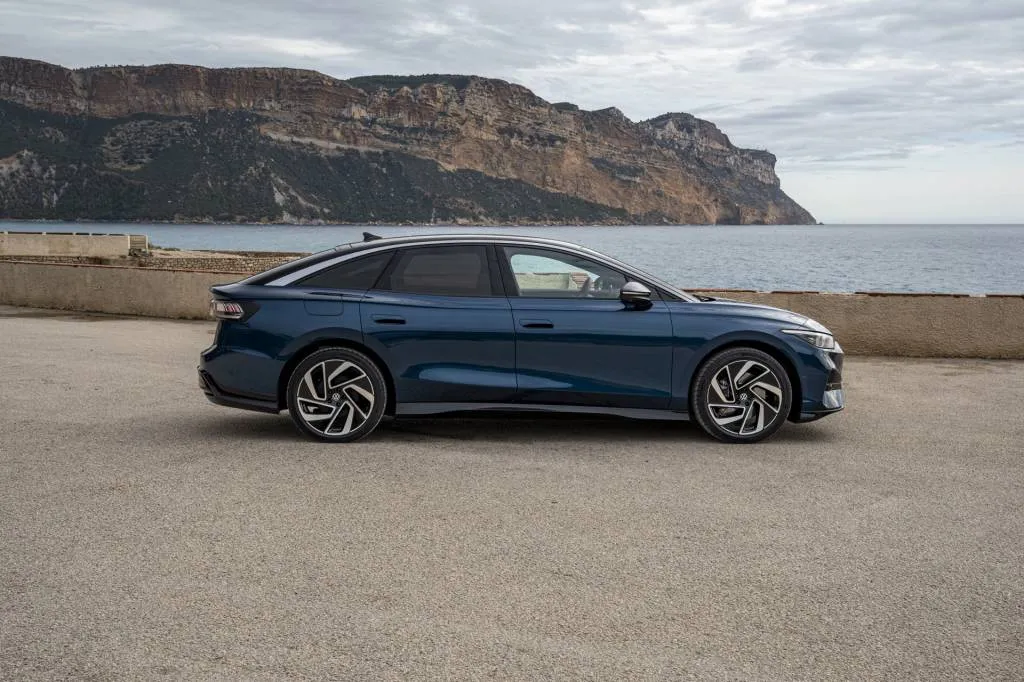
2025 Volkswagen ID.7
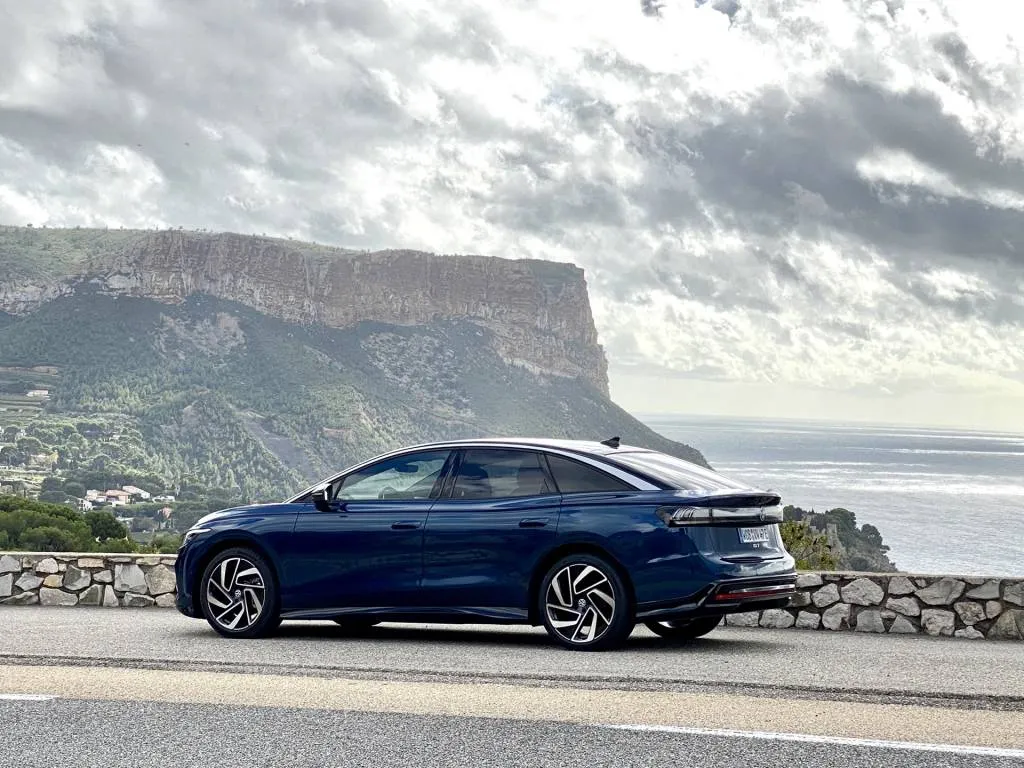
2025 Volkswagen ID.7
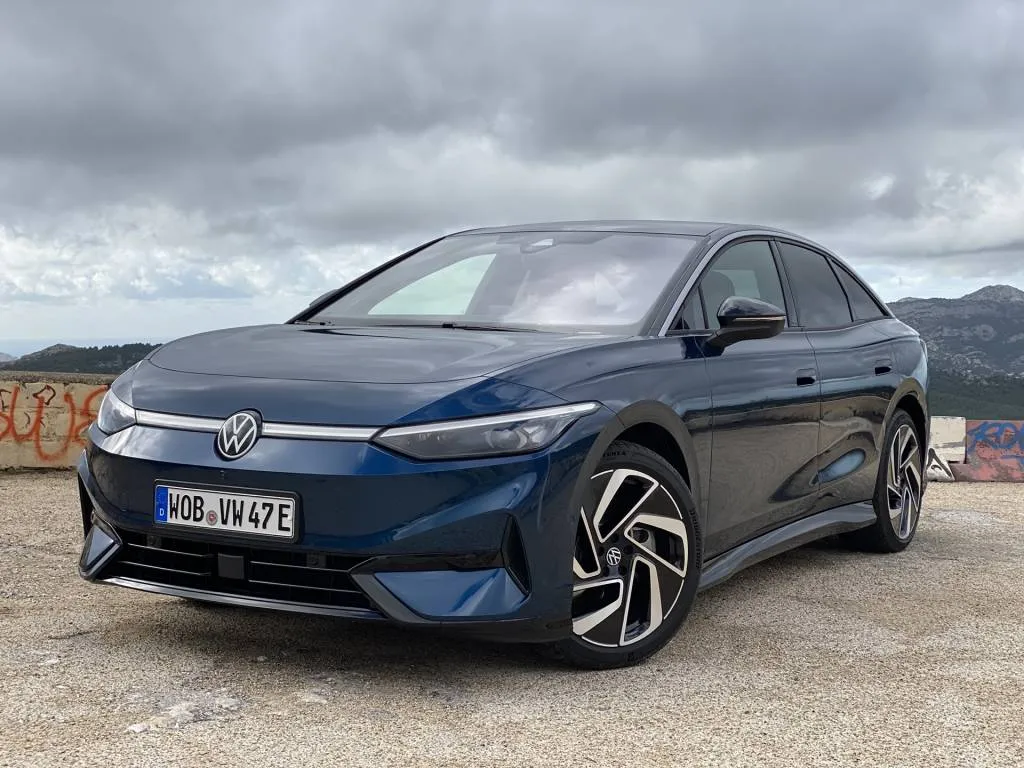
2025 Volkswagen ID.7
Its typical VW understated design may not be noticeable, but its efficiency should turn heads. The design elements ensure a low drag coefficient of 0.23, the same as the Tesla Model 3, although it is closer to the size of the Tesla Model S. Think of it as an Arteon for the electric age, but at 195.3 inches long, 4 inches longer and a 5.1-inch longer wheelbase at 117.0 inches. Volkswagen says it’s the lowest model in its growing ID family of electric vehicles, but at 60.5 inches it’s almost ten inches taller than the Arteon, thanks in part to the flat battery pack that takes up vertical space in the floor.
How does the VW ID.7 2025 drive?
A new motor and drive unit emerges from the ID.4 system. More windings and stronger magnets make it more powerful, with an output of 210 kW and an output of 282 hp and 429 lb-ft of torque, up from 201 hp and 229 lb-ft for the ID.4. This makes the ID.7 more spirited than the ID.4, but it doesn’t jump out of line like other high-torque electric vehicles. The permanent magnet motor accelerates the ID.7 from 0 to 100 km/h in 6.5 seconds.
All of this torque requires a reduction gear, and the drive unit features a new inverter and air and water cooling to improve efficiency and reduce friction losses. Once you’re moving, there’s plenty of power, and overtaking trailers or other slow-moving traffic uphill is easy up to speeds of around 80 mph. The ID.7 has a top speed of 112 miles per hour, which could hit Germans harder on the highway than North Americans.
Four driving modes – Eco, Comfort, Sport and Individual – offer slight modulations that are subtle rather than pronounced. Sport mode speeds up throttle response (while Eco mode turns to mush), tightens the steering and tightens the available adaptive dampers, while Individual mode offers more granularity on the touchscreen between Comfort and Sport settings.
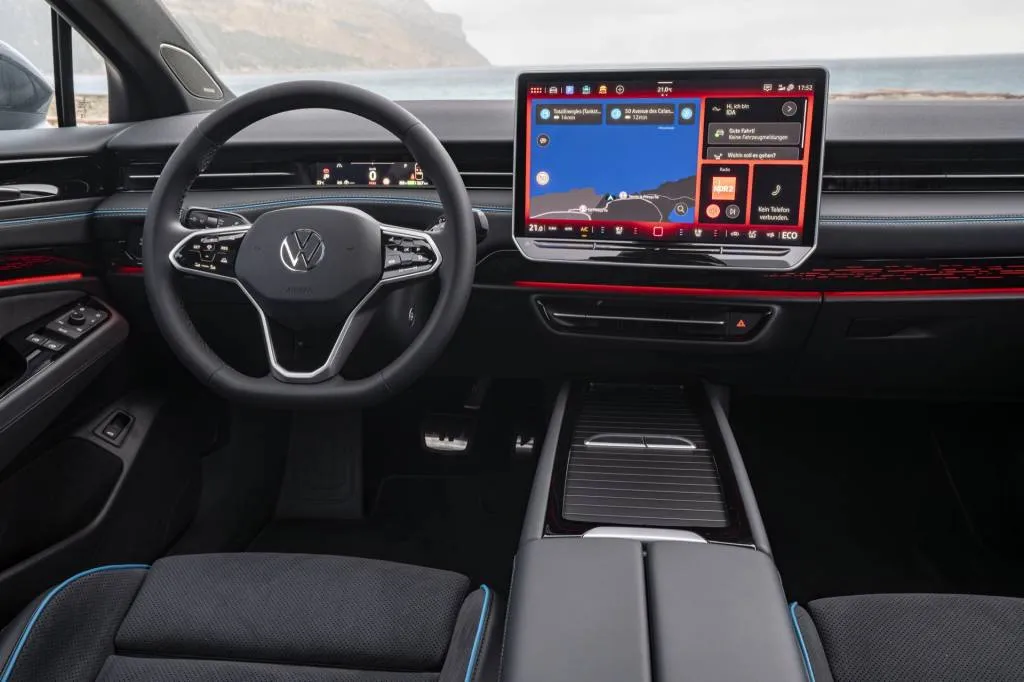
2025 Volkswagen ID.7
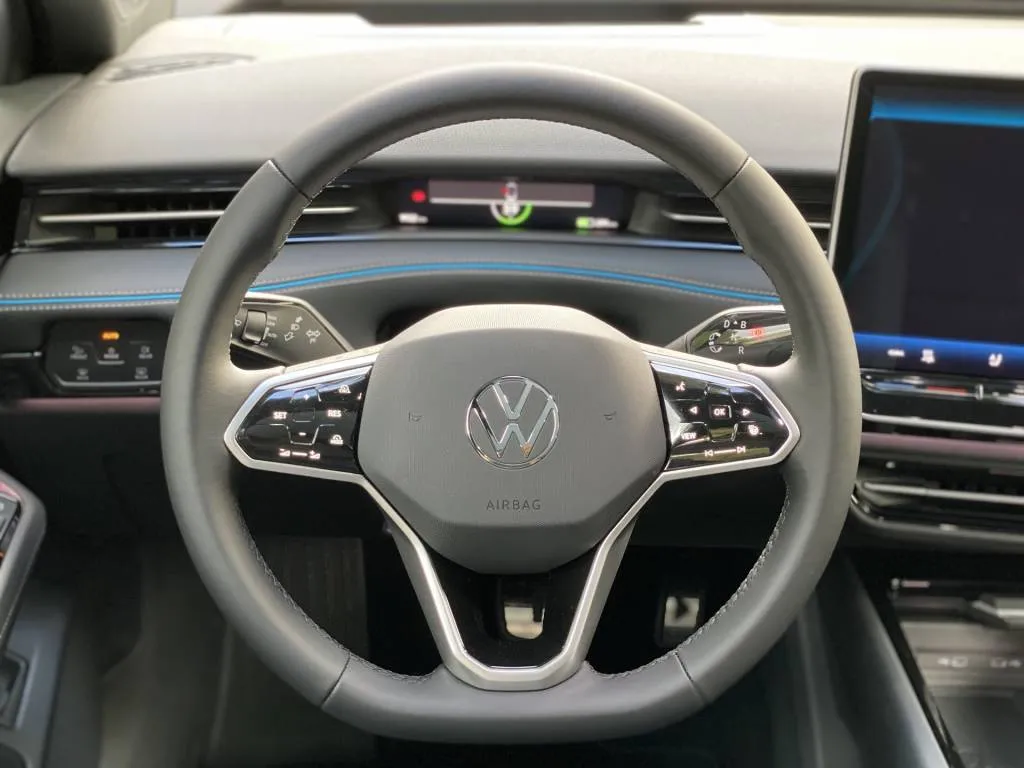
2025 Volkswagen ID.7
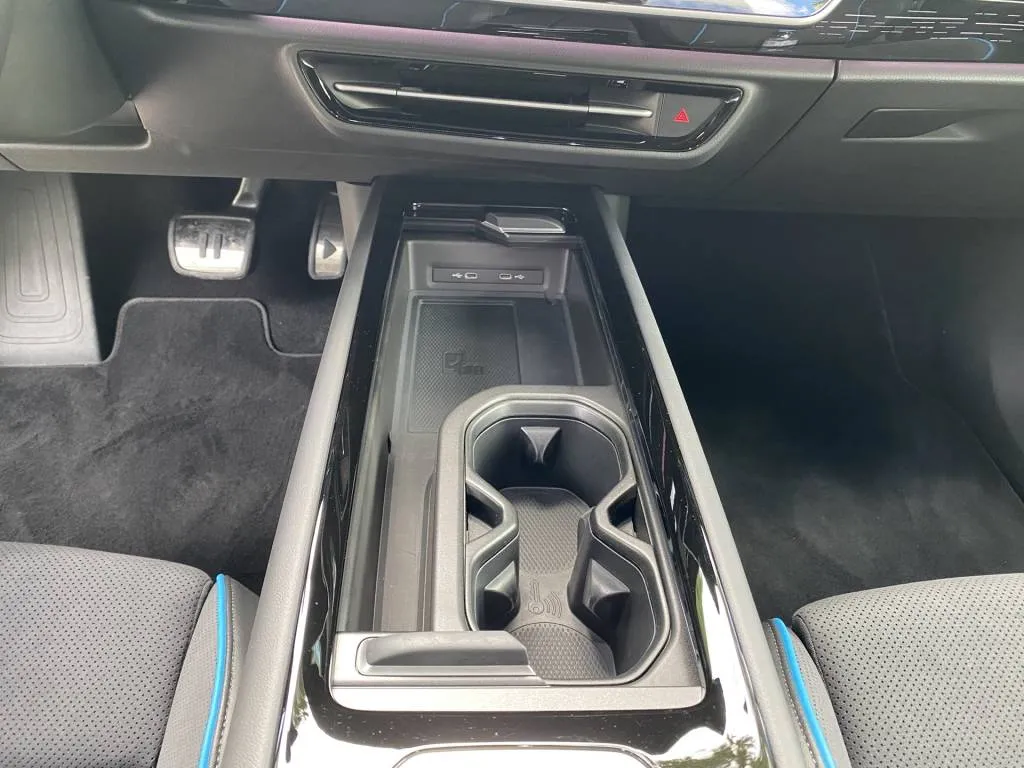
2025 Volkswagen ID.7
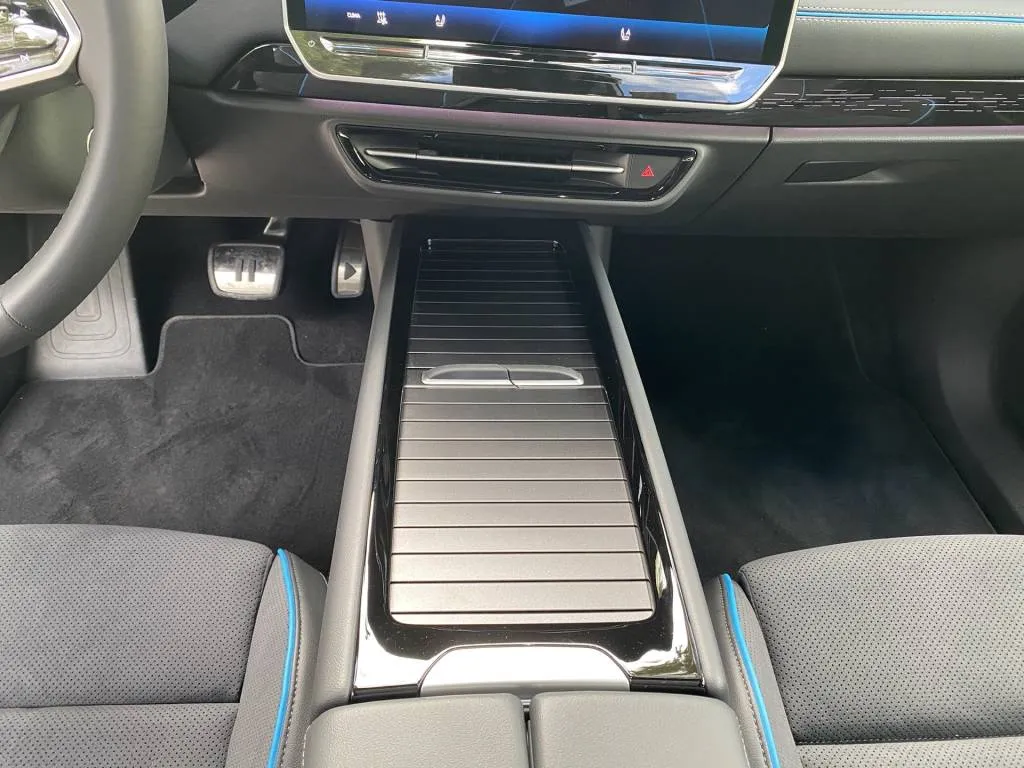
2025 Volkswagen ID.7
There is no one-pedal driving, as VW relies on the sole recuperation brake setting B on the steering column lever. Since most of the braking action occurs at the front and via the engine, VW still uses cheaper drum brakes on the rear wheels instead of disc brakes, which VW says have higher rolling resistance.
The ID.7 is responsive when it needs to be, and its charm doesn’t come from speed. Instead, the hatchback impresses with its quiet serenity and stately calm when cruising. Wind and driving noise from the standard 19-inch alloy wheels only become noticeable above the speed limit on the motorway.
VW doesn’t compensate for the ID.7’s curb weight of 4,788 pounds with air suspension, but instead relies on front struts and a multi-link rear suspension, supplemented by optional adaptive damping. It sits higher than most cars but lower than an electric crossover, and the weight keeps it planted. It doesn’t tip forward under hard braking and the damping partially compensates for the roll in corners. If you’re looking for more power, consider the upcoming dual-motor GTX model.
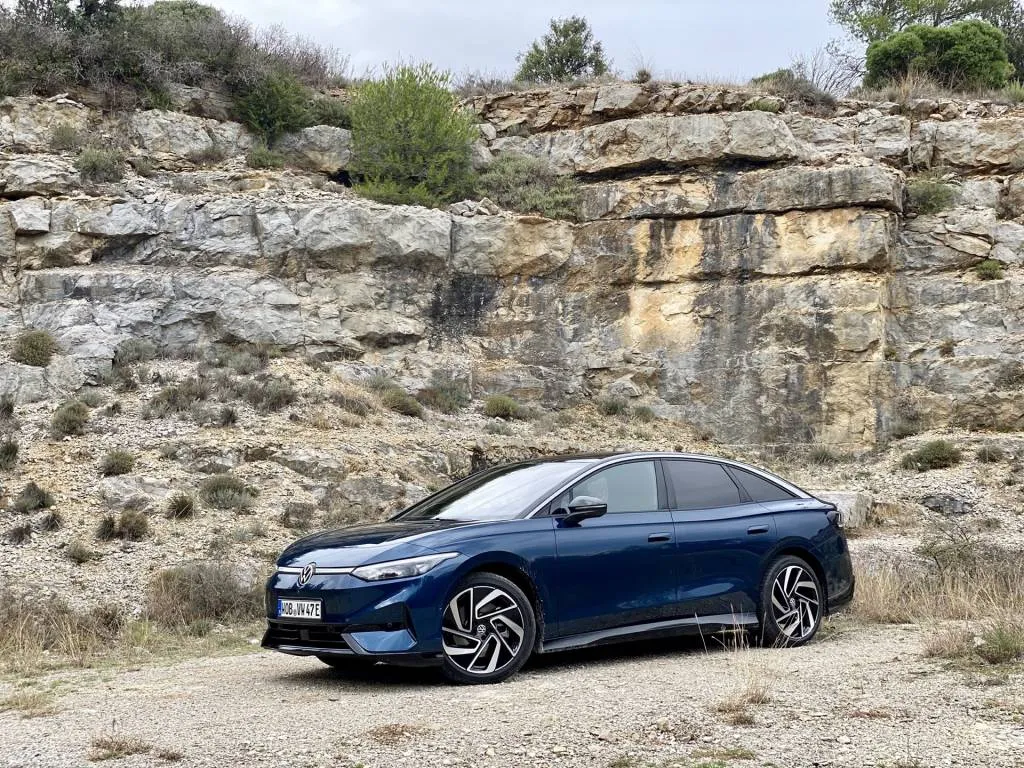
Comfort and equipment in the interior of the VW ID.7
Designed for comfort, the single-engine ID.7 also offers VW’s latest interior comfort. While heated, power-adjustable front seats are standard, my tester was equipped with VW’s ergoActive bucket seats with massagers. These super comfortable seats are filled with ten air cushions. They offer numerous massage settings that last up to 20 minutes, helping to catapult the ID.7 into luxury territory.
The ID.7’s infotainment system and interface is an improvement over the ID.4. Larger icons and a cleaner layout on the 15.0-inch touchscreen, as well as a more logical menu structure, reduce the time you spend on the screen. A configurable top bar serves as vehicle and driving mode controls, while the bottom climate bar acts as a hot button for the most common climate functions.
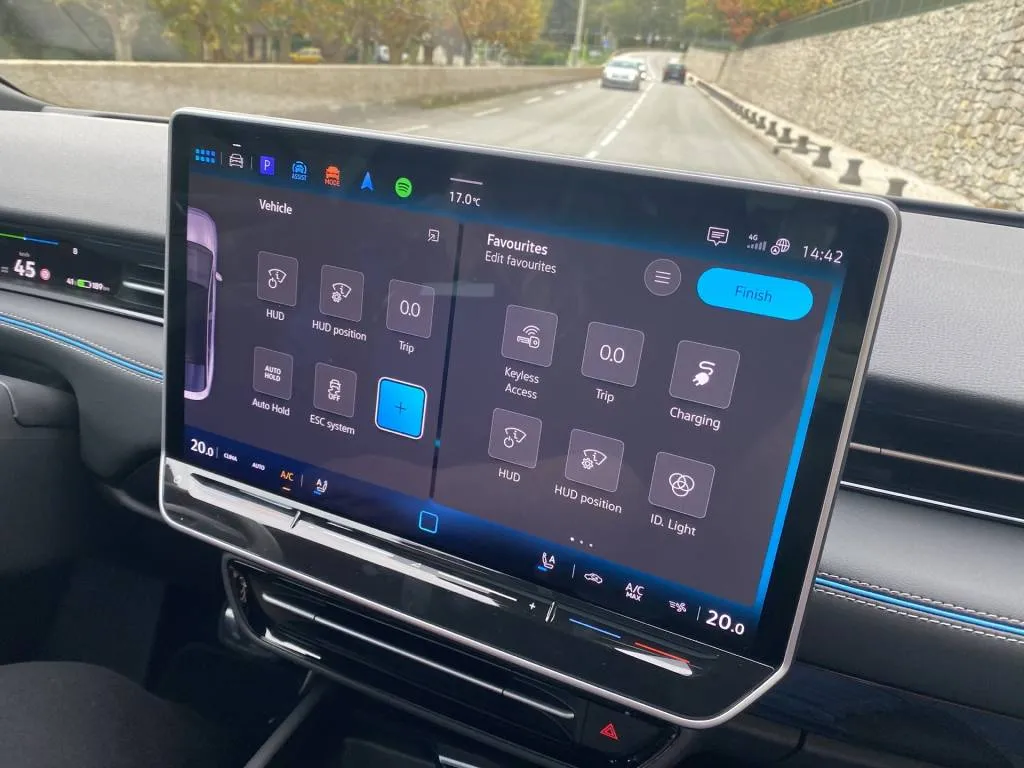
2025 Volkswagen ID.7

2025 Volkswagen ID.7
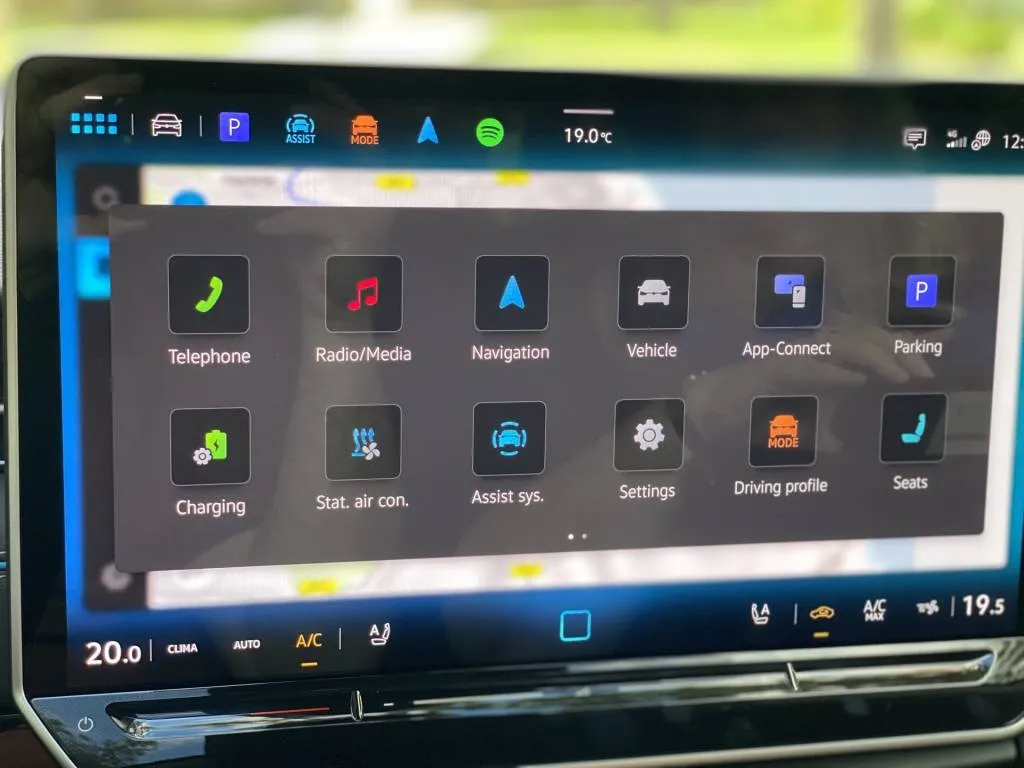
2025 Volkswagen ID.7
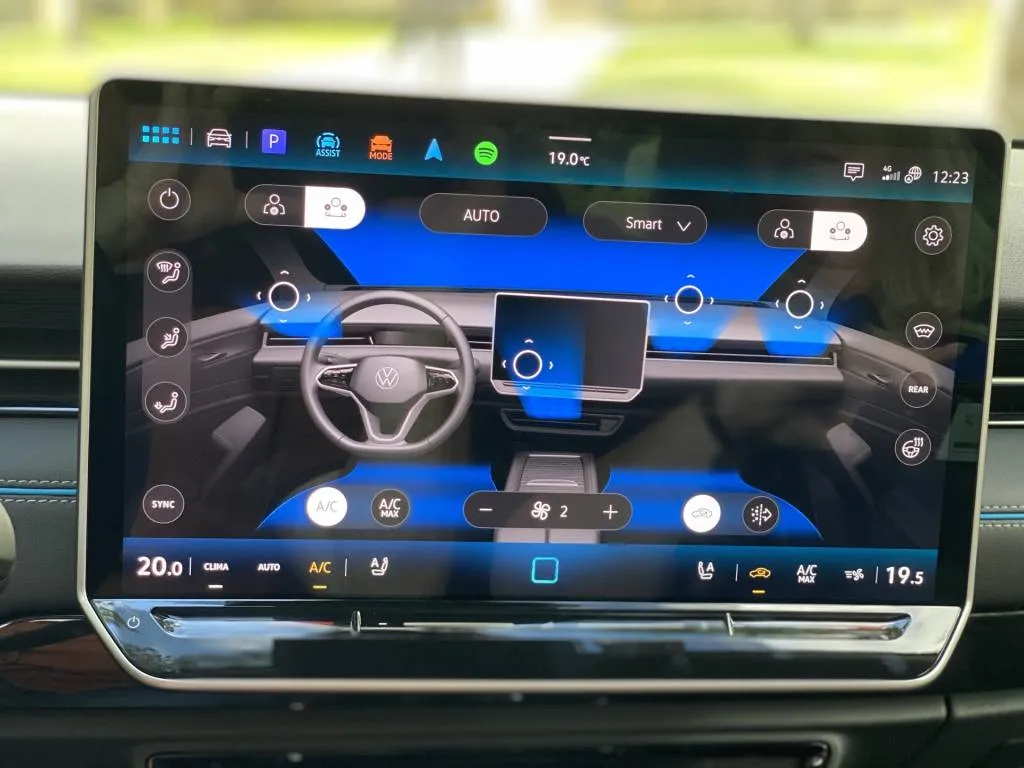
2025 Volkswagen ID.7
The climate controls below the touchscreen are backlit for better visibility and can be pressed like a button, making it easier to adjust the temperature while driving. New voice commands also localize the climate to specific areas. If your hands are cold, you can say “Hello ID” to wake it up and then “Warm my hands” or “My hands are cold”. The system then activates the steering wheel heating and directs the vents towards the steering wheel area. When you say “My feet are cold,” the bottom vents activate. While you don’t need Rosetta Stone or Duolingo to get by, there is a learning curve that certain accents and tones (especially among Canadian women) can inadvertently set in motion.
Climate controls and ventilation levers are still easier than adjusting the vents via voice commands or the touchscreen. The advantage is a clean, tidy dashboard.
VW has also reduced the digital instrument cluster to the size of a chocolate bar. It displays speed and charge status, but most of the driving information is in the standard head-up display. The augmented reality display works well for the most part, although the blue lines in the flashing navigation guidance can be washed out when wearing polarized sunglasses.
Fortunately, VW offers a third visual trick for navigation guidance in addition to the head-up display and touchscreen. A blue light bar on the interior trim is activated when navigation is set; It flashes from left to right when you need to cross a ramp, or flashes blue on the right when you need to turn right.
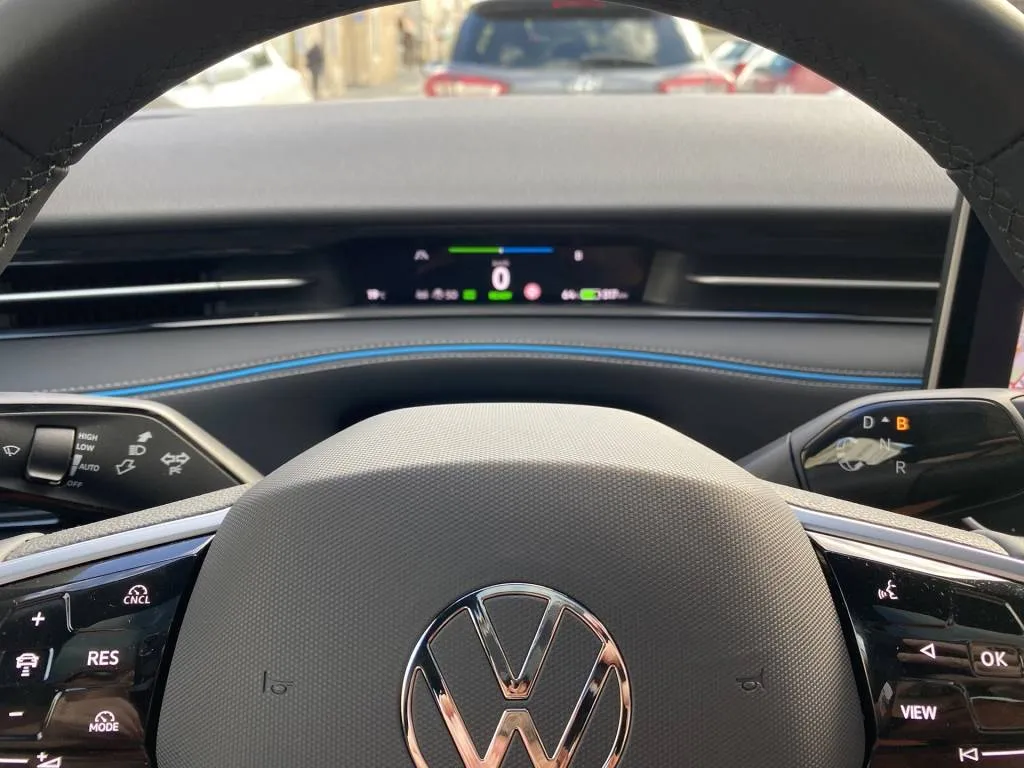
The hatchback design of the VW ID.7 gives it versatility
The long 117.0-inch wheelbase, one inch longer than the Ioniq 6, creates a spacious, open cabin. Wide door openings and higher ground clearance than most cars (VW didn’t have this feature at press time) make getting in and out easier, and the rounded roofline doesn’t chop heads in the Volkswagen ID’s roomy rear seats. 7. At 5’7″ tall, I could place a fist on my head without it touching the ceiling.
Four adults fit comfortably, and the rear middle seat works better as a cup holder or pass-through for longer items in the hatch. The 60/40-split seats fold down via the seat bases or via a latch in the tailgate, and while they don’t have the vertical height of a crossover, the tailgate is deeper than it is wide, adjusting from 18.8 cubic feet to that of one Crossovers expand 56.0 cubic feet with the rear seats folded. The flat load floor can be lowered an additional five centimeters to create more space, and two storage compartments underneath can accommodate the charging cable or it can be stored in the suitcase-like front trunk area.
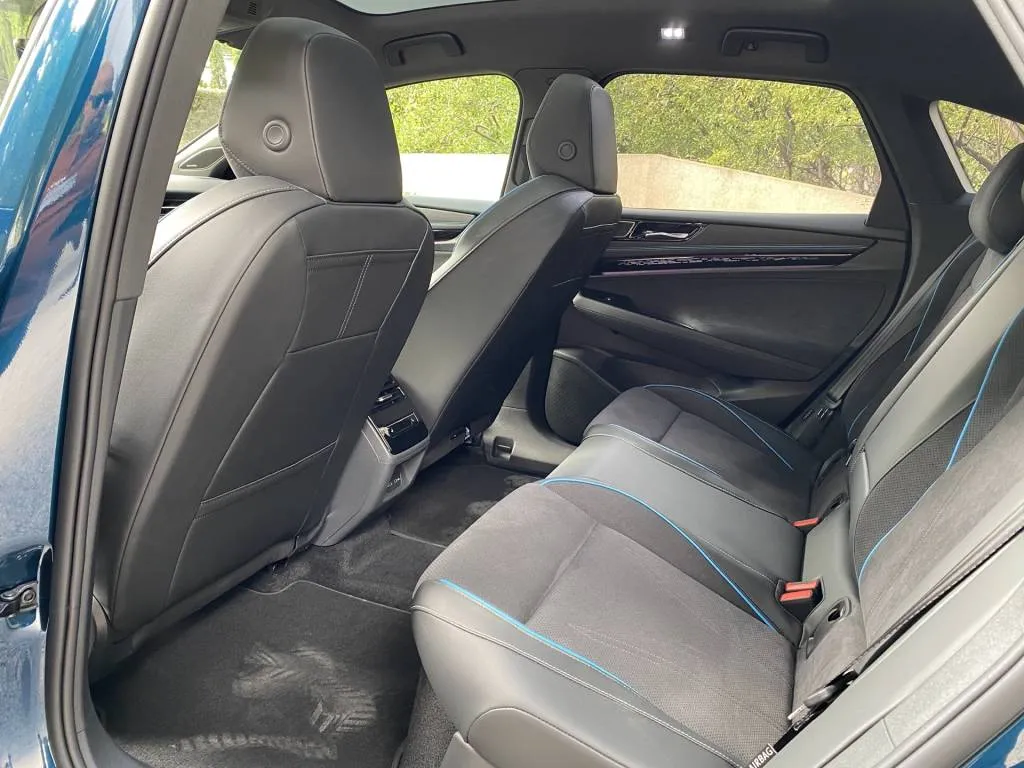
2025 Volkswagen ID.7
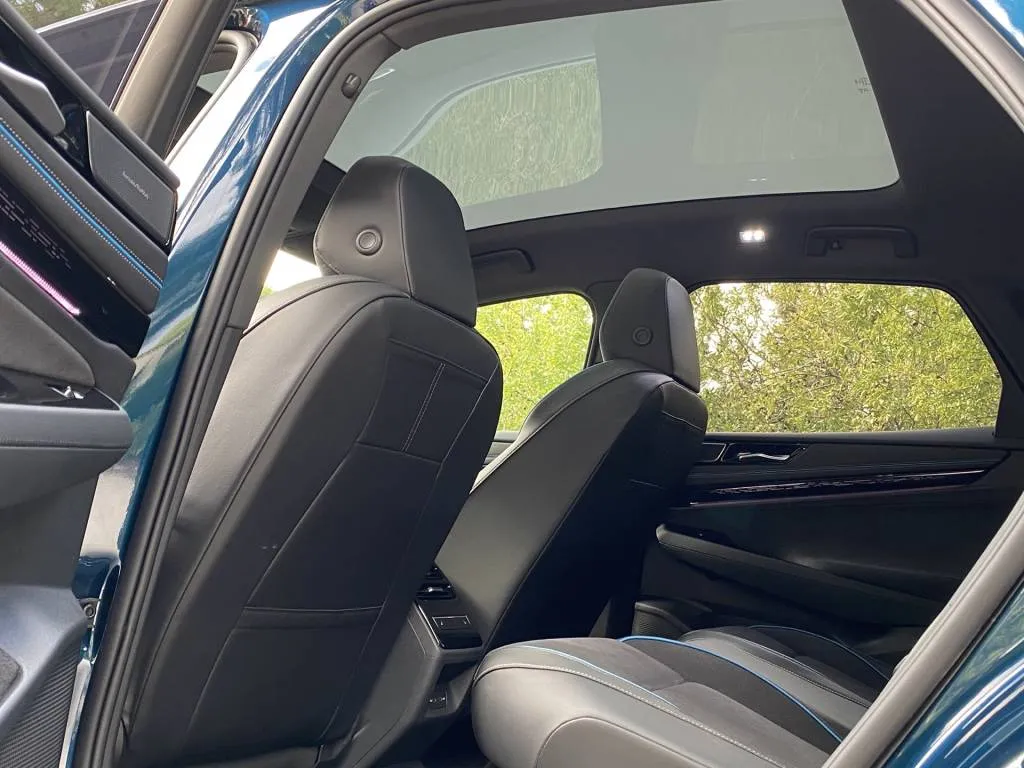
2025 Volkswagen ID.7
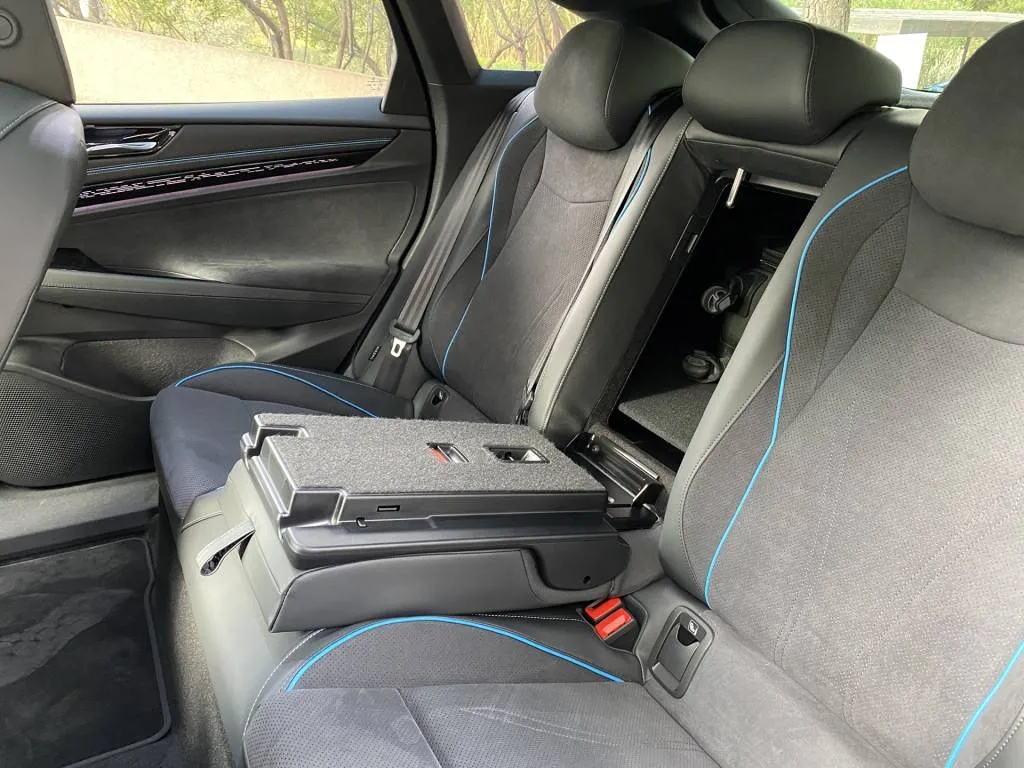
2025 Volkswagen ID.7
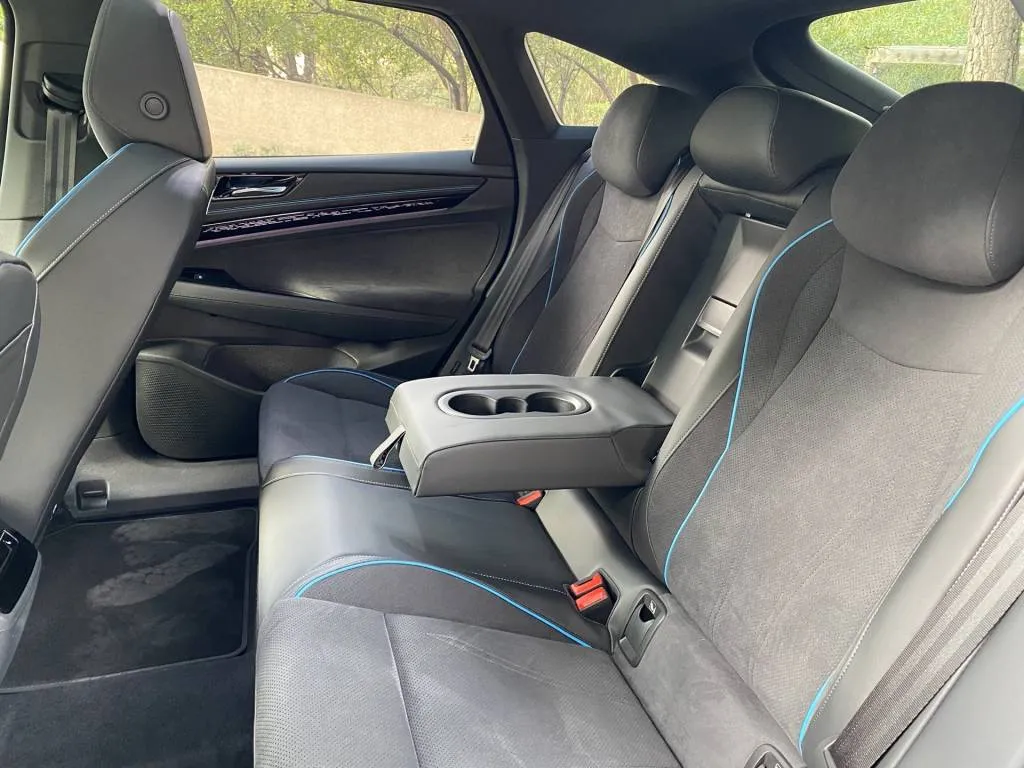
2025 Volkswagen ID.7
Questions about the VW ID.7
There’s a lot we don’t know about the ID.7 in the USA. Based on what we know, we expect a range of around 350 miles with the single-motor powertrain, just 11 miles less than that Hyundai Ioniq 6. VW estimates it will use about 15.2 kWh per 62 miles, giving an efficiency of almost 4.1 miles per kWh. If it maintains this score in EPA testing, it would be among the most efficient electric cars alongside the Hyundai Ioniq 6 and the Tesla Model 3.
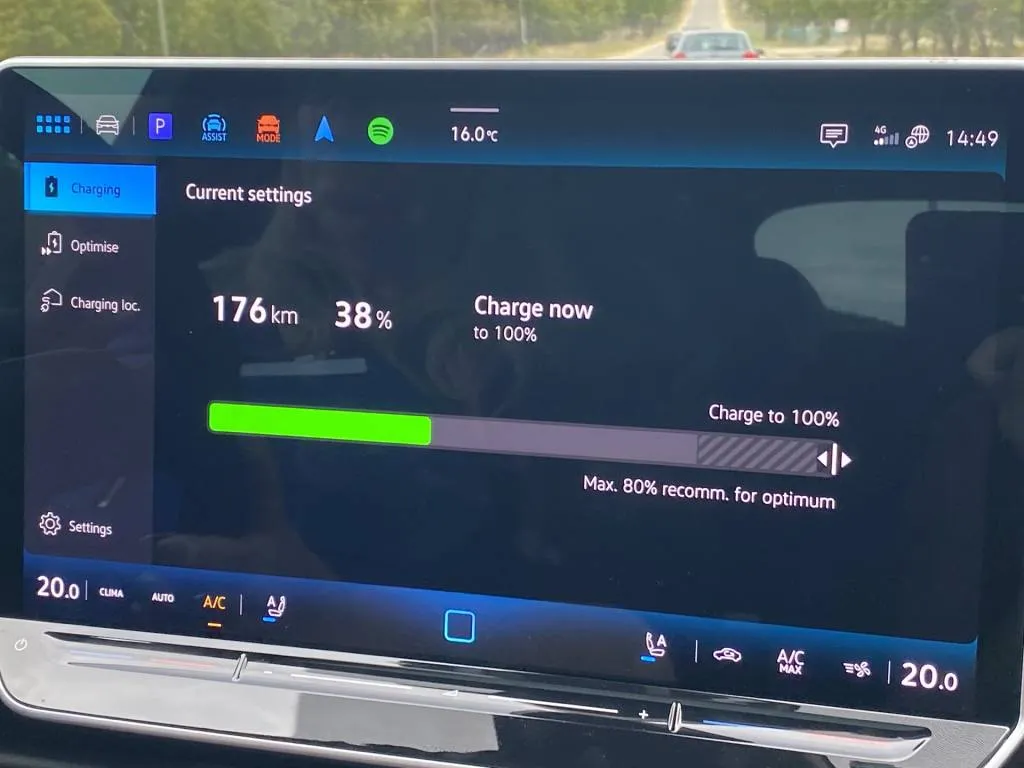
2025 Volkswagen ID.7

2025 Volkswagen ID.7
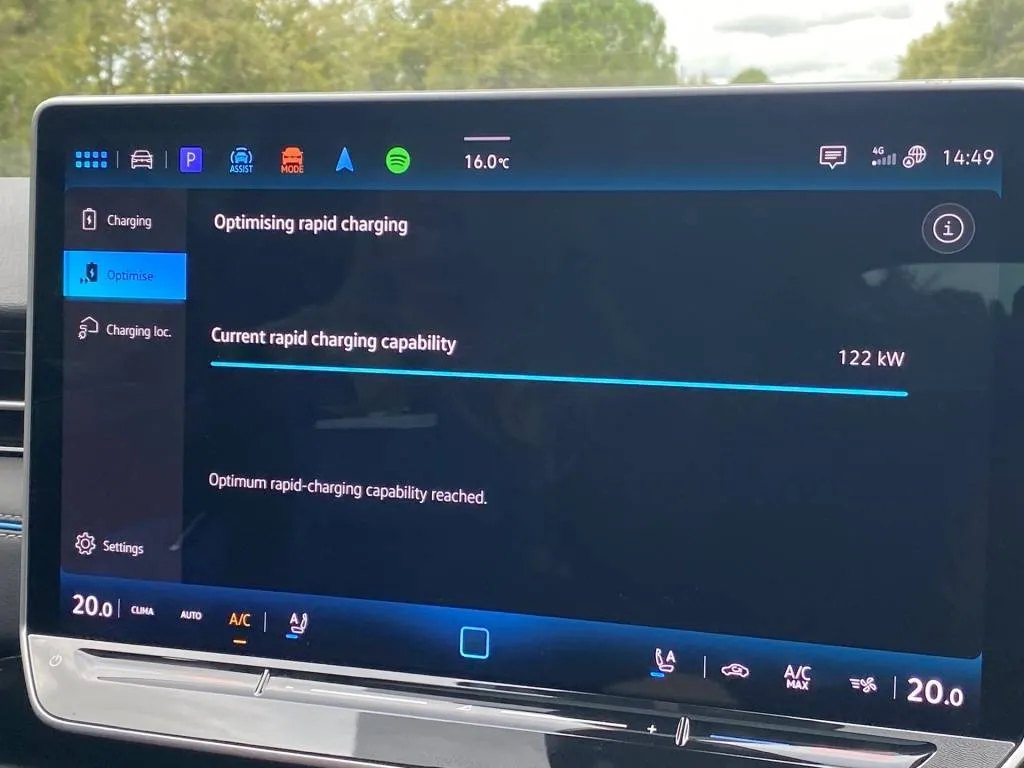
2025 Volkswagen ID.7
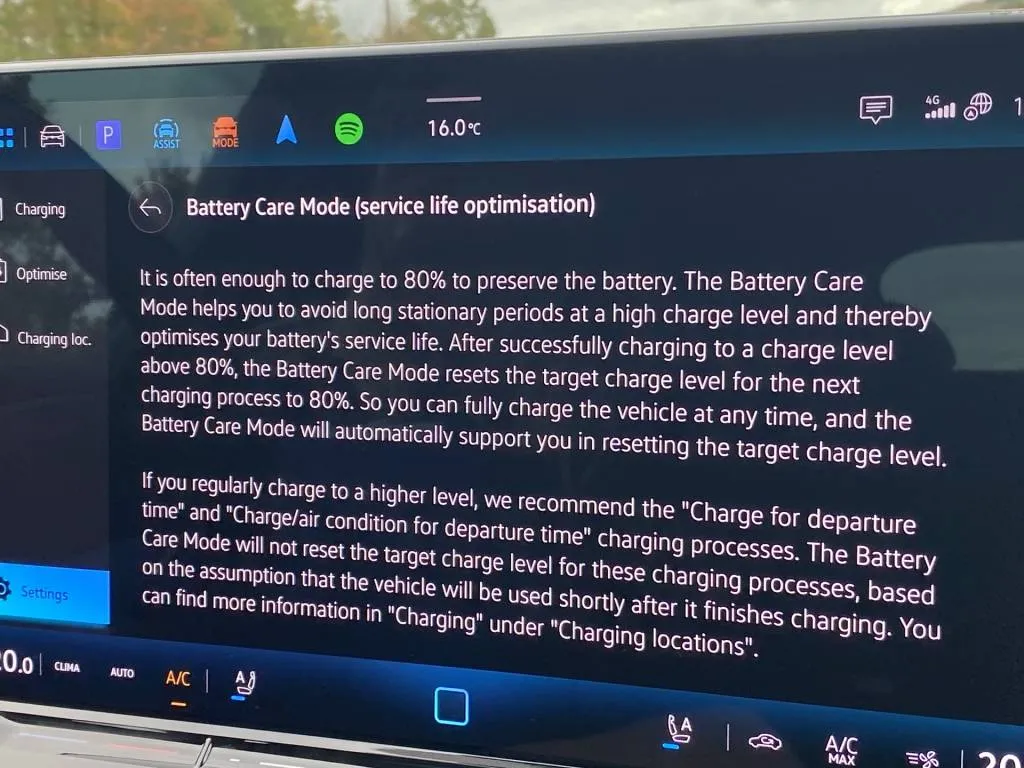
2025 Volkswagen ID.7
The ID.7 does not have bi-directional charging in the US and cannot charge as quickly as the Hyundai Ioniq 6. At 175 kW on a DC fast charger, the ID.7 battery charges from 10 to 80% in 28 minutes . It also has an 11.0 kW onboard charger for 240-volt home charging, but VW hasn’t provided these charging time estimates for the US market.
As more and more electric vehicles come onto the market, most of which are marketed as crossovers, the ID.7 serves as a refreshing reminder that an electric hatchback sedan can be an efficient and quiet cruiser with all sorts of amenities.
Volkswagen paid for airfare and lodging for Motor Authority to present this first-hand report.
